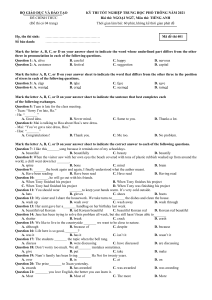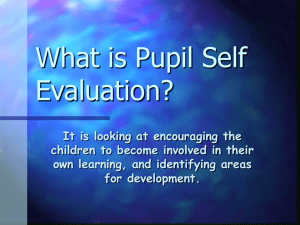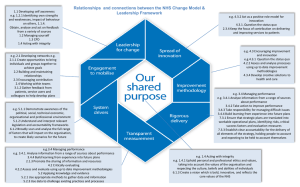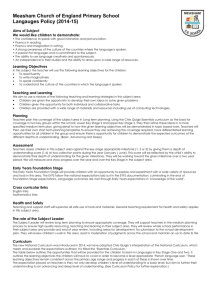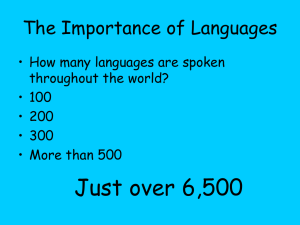Student Guide to Controlled Assessment (Word
advertisement
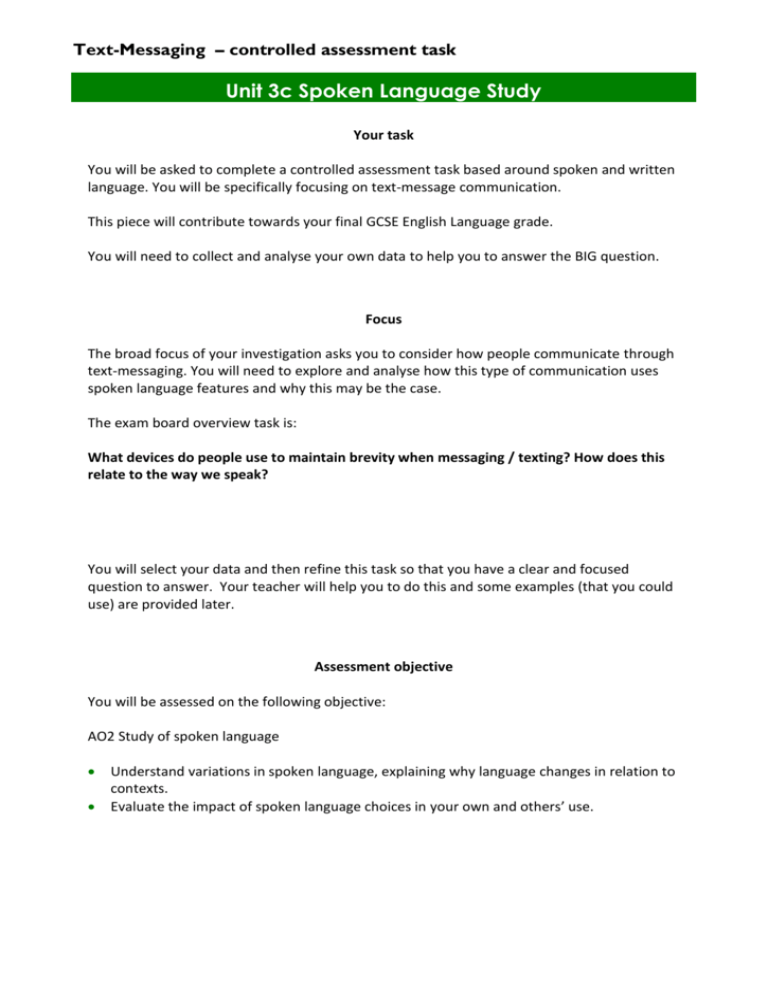
Text-Messaging – controlled assessment task Unit 3c Spoken Language Study Your task You will be asked to complete a controlled assessment task based around spoken and written language. You will be specifically focusing on text-message communication. This piece will contribute towards your final GCSE English Language grade. You will need to collect and analyse your own data to help you to answer the BIG question. Focus The broad focus of your investigation asks you to consider how people communicate through text-messaging. You will need to explore and analyse how this type of communication uses spoken language features and why this may be the case. The exam board overview task is: What devices do people use to maintain brevity when messaging / texting? How does this relate to the way we speak? You will select your data and then refine this task so that you have a clear and focused question to answer. Your teacher will help you to do this and some examples (that you could use) are provided later. Assessment objective You will be assessed on the following objective: AO2 Study of spoken language Understand variations in spoken language, explaining why language changes in relation to contexts. Evaluate the impact of spoken language choices in your own and others’ use. Text-Messaging – controlled assessment task The rules and regulations You should write approximately 800–1000 words. Your assessment will take place over a number of lessons in controlled conditions from ______________________________ to________________________________. During the assessment period you may not receive help from other students or your teachers. You can prepare for your assessment in class and at home. During this time you may work with other students and ask your teacher questions. You should also pay close attention in class and listen carefully to the advice that you are given and what you are taught. You will be allowed to take one A4 page of notes into your assessment. These notes should consist of key words and phrases, annotations and reminders. They may not include full sentences. You will need to submit your notes with your final piece of work. You may use a copy of your data during your assessment. This must not have any annotations on it before your assessment begins but you may write on this copy during your assessment. It will be submitted with your final piece. Text-Messaging – controlled assessment task Grade criteria This will give you an idea of how the top, middle and lower grade bands apply to this task. Look carefully at what is expected at each stage and think about how you can use this to improve your work. Band 5 (17–20 marks) ‘Sophisticated, impressive’ You will show a sophisticated and impressive understanding of your data and text-messaging. You will demonstrate the ability to analyse and contextualise your data in a perceptive way. You will analyse how spoken language features are adapted and used in text-messaging, exploring the reasons for this. You will identify key features in your data and analyse them in a consistently sophisticated way, using carefully chosen examples and the correct terminology. You will analyse and evaluate possible social issues, identity issues and public perceptions that arise from your data. Band 3 (9–12 marks) ‘Clear, consistent’ You will explain how you, and the participants in your data, use and adapt language for the purpose of the interaction you are exploring. You will identify and explore some of the features of spoken language and text-messaging that can be seen in your data, you will use the correct terms to describe these, explaining the effect that they have and why they might be used. You will explain the attitudes that people have towards the type of communication you are writing about and will explore the possible advantages and disadvantages with this sort of communication. Band 1 (1–4 marks) ‘Showing some awareness’ You will show a little bit of an awareness of how you and other people might change their language when sending and receiving text-messages. You will pick out a few examples of different features of spoken and text-message language and describe them (you probably won’t use the correct terms). You will be aware that people react in different ways to text-messaging but won’t explain this in detail. Text-Messaging – controlled assessment task Preparation – collecting your data Your first step is to collect your data. You don’t need to have pages and pages of text to analyse. In fact you will achieve a much better grade if you remember this golden rule: Write a lot about a little! It’s probably a good idea to have about one to two sides of A4 and no more. You will need two copies of your data; one to annotate during your preparation and the second as a clean copy to use during the actual controlled assessment. You will collect people’s opinions and ideas about text-messaging through questionnaires. You will transcribe text messages by either copying them from your sent box / inbox on your mobile phone or you may ask other people to copy them down on your behalf. Text-Messaging – controlled assessment task Preparation – analyse your data Read your chosen data carefully at least twice before you start. Think carefully about what you have studied in lessons, what you know about text-message language and what you have learnt about spoken language. Highlight and underline interesting examples of language use and make notes in the margin about the features that you see and why you think they are interesting. Text-Messaging – controlled assessment task Preparation – making your notes There is no right or wrong way to make notes. The trick is for you to experiment and find a way that works for you. You might like to use mind maps, bullet points, lists or diagrams. Regardless of how you present them, good notes should always be concise and clear. They should consist of reminders, key words and phrases. You cannot take a detailed plan into your controlled assessment. Some of the things you might like to think about when you are making your notes are: What is the context of the data? Think about where the text is found and what you know about this type of communication. What is the purpose of the interaction? Think about why the interaction is taking place. Who are the participants? Identify who is taking part in the interaction - do they know each other? Are there multiple participants? What has brought them together? How is the interaction similar to spoken language? Why do you think this is the case? How is the interaction different from spoken language? Why do you think this the case? What features do you think characterise this type of communication? Why do you think this is the case? What key themes might you want to write about? Try grouping your ideas around subheadings. Are there any key pieces of evidence that you think are particularly important? Are there any key points that you feel you should make? Text-Messaging – controlled assessment task Writing your assessment Once you have prepared all your ideas and thought about your question and your text you will be ready to write you final piece in controlled conditions. Be prepared to look at your text afresh, re-read it and spend a little bit of time underlining and annotating the key points you feel you should write about. Spend time planning your work, refer to your notes and ensure that you have a clear idea about how you would like to structure your writing. You should submit any plan that you make with your final piece. You are now ready to write and produce your final piece of work. If you are writing this by hand and make a mistake, don’t worry, simply cross it out neatly. If you have left a bit out and need to add it – simply footnote the extra pieces clearly so that your teacher and the examiner can see what you are doing. Remember: Point Evidence Explanation Checking and editing A couple of weeks after your assessment has taken place your teacher will give you a little more time (approximately 30 – 45 minutes) to check and edit your work. It’s much easier to be objective about what you have written if you don’t see it for a while. When you are checking your work you should think about the following things: Accuracy – Check your spelling, punctuation and grammar. Content – Have you demonstrated the ability to write about a range of features? Have you used suitable examples? Have you developed your ideas? Variety – Have you used interesting language to explain your ideas? Have you used a range of sentence structures? Precision – Have you used suitable terminology? Could you give your ideas more clarity by using more effective words or phrases? Structure and cohesion – Does your writing demonstrate a clear development of ideas? Are your points clear and do they follow on logically from one another? Do you use a clear paragraph structure?

